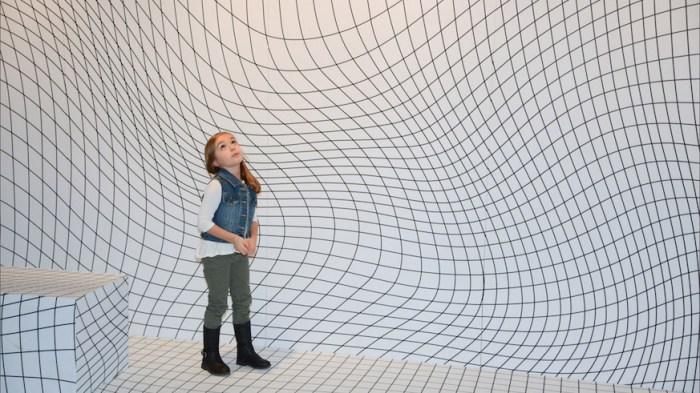You’ve probably heard this fact before, but it’s so astonishing that it bears repeating: We know more about the surface of Mars than what’s under Earth’s oceans.
New technology is helping to change that, and you don’t even need a swimsuit to see the results.
Unseen Oceans, the latest exhibit at the American Museum of Natural History opening March 12, starts with visitors standing on the sands of digital beach, then dives into the newly revealed world of deep-sea giants, glowing sharks and into parts of the sea that humans just recently got to see for the first time.
“All life on our planet depends on the oceans, yet they remain one of the last great frontiers,” says museum President Ellen V. Futter. “With Unseen Oceans, visitors can join museum scientists on their high-tech, high-adventure, high-impact fieldwork to see and discover magnificently beautiful, extraordinarily diverse and enormously important creatures living at previously unseen ocean layers.”
Dive into the deepest ocean
Wear your best Jacques Cousteau red beanie to step inside new circular galleries that put you inside various ocean scenes, then reach out and “touch” the biggest creatures in the sea like giant squid and blue whales as they swim by you in true-to-life-size 3D.
There’s a floor-to-ceiling scene of all the various marine species that glow in the dark, as well as an aquarium of live animals like scorpionfish, comb jellies and chain catsharks who we’ve just recently discovered can glow, too.
Adventurers can take a virtual ride in a submarine, then step inside a full-size Triton sub for a photo op. Dig trenches and form islands on a magnetic table with projection screening technology, then take a look at parts of the ocean we’re just seeing for the first time thanks to new advances in robotics and satellites — including a new island that will become part of Hawaii (in 100,000 years, but it’s never too early to be excited about a new beach!)
@SylviaEarle No two fish are alike. Get to know them as individuals. Less than 10% of ocean wildlife remains. And we are changing the chemistry of the ocean. More acid. Less oxygen. So much plastic. @AMNH #OceanLuminaries #GoVeg pic.twitter.com/96u4tWlZbm
— Ea Tamen Perseveravit (@DanielleThys) March 3, 2018
Consider the future
All this undersea fun has a serious message, too. Unseen Oceans is a reminder of everything we don’t yet know about what’s under the water that takes up over 70 percent of our planet’s surface — and growing.
Even as climate change wreaks havoc on our land, it’s having a devastating effect on the ocean, which produces almost half of the Earth’s oxygen and absorbs a significant portion of the greenhouse gases we put out.
Fish populations have plummeted by half since 1970 because of overfishing. Habitat degradation, like corals dying because of warming waters, and dumping trash at sea threaten our waters, which remain largely a mystery: Only about 10 percent of the area covered by the world’s oceans has been mapped.
Though we are in a “golden age of ocean exploration,” as Futter puts it, “At the same time, threats from climate change and pollution, both brought on by human activity, are making [scientists’] work more important and urgent than ever.”
Unseen Oceans is open March 12-Jan. 6, 2019 at the American Museum of Natural History, located at Central Park West and 79th Street. Admission begins at $23.
























